On April first, we went to “Fujisan Hongu Sengen Taisha” and “Shiraito Falls” in Fujinomiya-City, Shizuoka-Prefecture. In 2013, these places were added to the World Heritage List.
“Fujisan Hongu Sengen Taisha” is the head shrine of the 1,300 Asama or Sengen shrines in Japan, deifying Mount Fuji as an object of worship, and is known as the center of Mt. Fuji worship.
You can reach “Sengen Taisha” in about 10 minutes on foot from the Fujinomiya Station on JR line. A pretty hanging ornament was hung in front of each shop along the shopping street in the course of the shrine.
Here is “Fujisan Hongu Sengen Taisha.” This is the approach to the shrine.
The pond on the front side is called “Kagami-Ike (Mirror pond)” and the building on the rear side is called “Romon (tower gate or two-story gate).”
This building is a purification pavilion, at which you should wash your hands and rinse your mouth for purification.
This is the Romon (tower gate or two-story gate).
When you pass through the tower gate, you can find the “Haiden (Worship Hall or Outer Shrine).”
The building behind is the “Honden (Main Hall or Inner Shrine).” The cherry tree is called “Shingen-Zakura,” which is a weeping cherry tree, planted by Takeda Shingen. That day was chilly with scattered showers, but the cherry blossoms were in full bloom and so beautiful.
We went to “Wakutama-Ike (Gushing Jewels Pond)” passing through the gate on the left side.
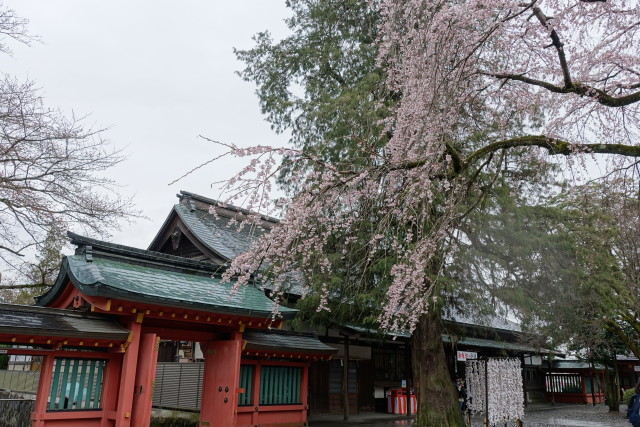
In “Wakutama-Ike,” snow meltwater of Mt. Fuji gushes forth from spaces between lava layers, and the temperature is 13ºC and a water inflow is 3.6 kiloliters/second throughout the year. In ancient times, climbers on Mt Fuji soaked in the pond for purification, and then headed for Mt. Fuji.
There are many small shrines around the pond.
Then, we went to “Shiraito Falls” by bus which took about 30 minutes from the “Sengen Taisha.”
Forward of the “Shiraito Falls,” there is “Otodome Falls,” having a width of 5 m and a fall of 25 m. The water speed before it falls is extremely fast, and the water falls while making a loud noise. The falls are really vigorous.
There were shrines beside the falls.
We walked on a mountain path for about 3 minutes from the “Otodome Falls,” and then we looked at “Shiraito Falls,” which has a fall of 20 mm and a width of 200 m. You can have a wonderful view of the fantastic scenery even from far away. Also you can approach near the waterfall basin. The water is spring water from Mt. Fuji, flowing from spaces between the rocks. Thus, that place has a calm and solemn atmosphere with little sound.
We returned to the “Sengen Taisha” in the evening. There were a few people and the shrine had a calm atmosphere, different from the day time. On that day, “Okasai (Cherry Blossom Festival)” was held, and “Kyogen” was played on this stage. (Unfortunately, the photographing of Kyogen was prohibited.)
It became colder and colder after 6 o’clock, and we left the shrine. On the way back, lanterns were lighted in the precincts of the shrine, and that place was very atmospheric.
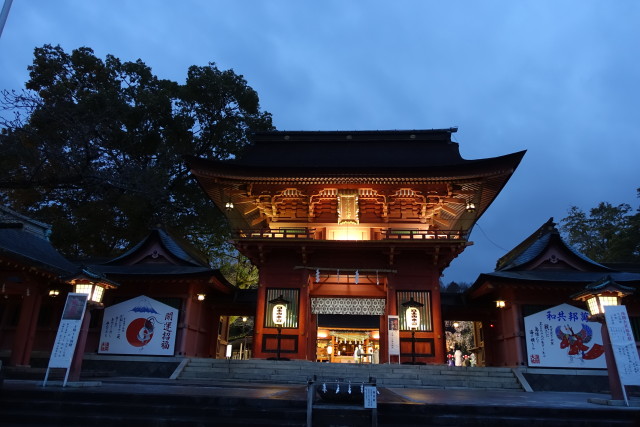
On that day, it drizzled rain and we had unlucky weather, and so we could not see Mt. Fuji. But my niece woke up at 5 am on the next day, went to the shrine again, and took photographs of Mt. Fuji.
Photo by R.
Mt. Fuji, shrouded in mist, is fantastic!


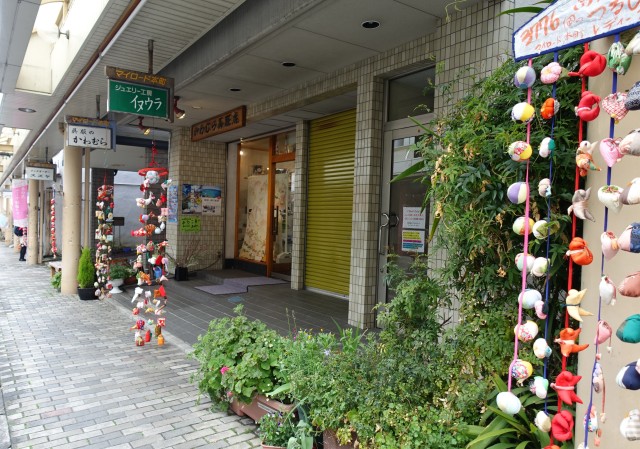
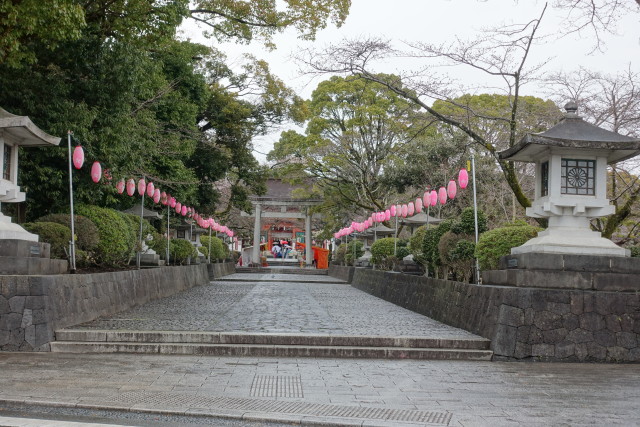
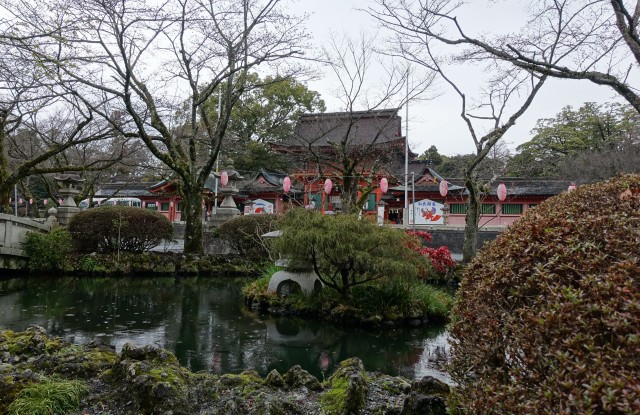
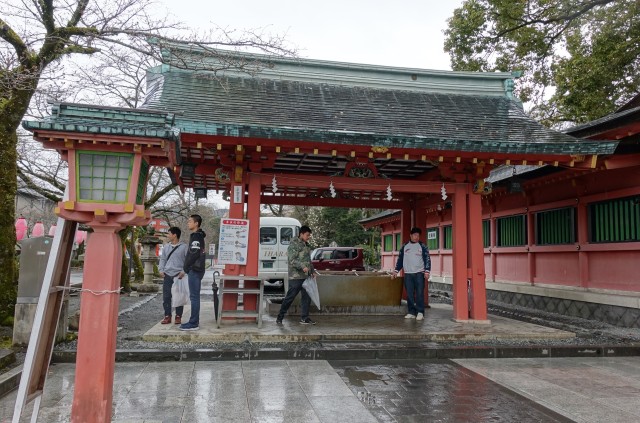

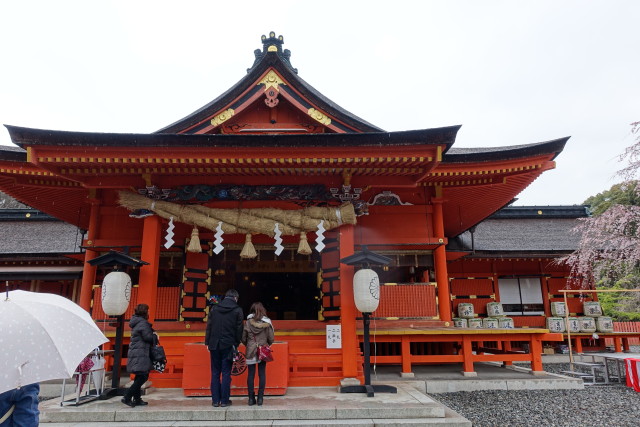
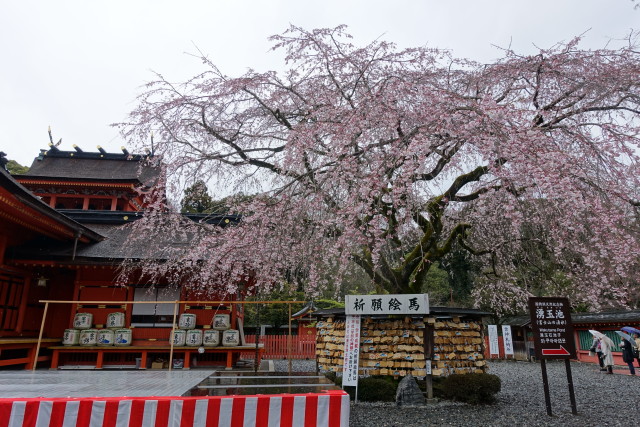
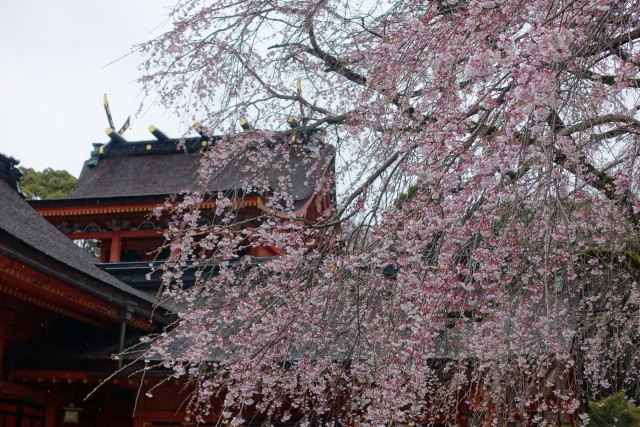
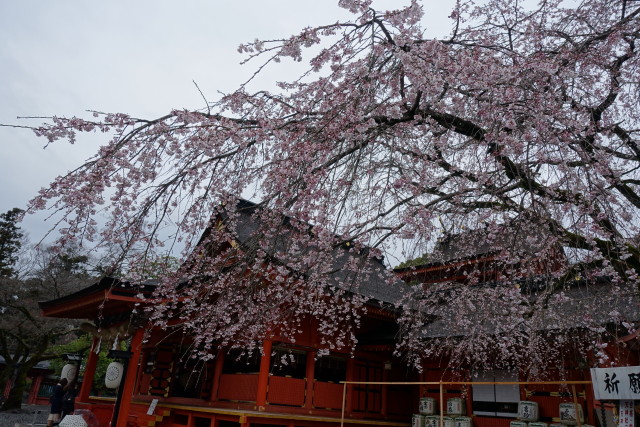
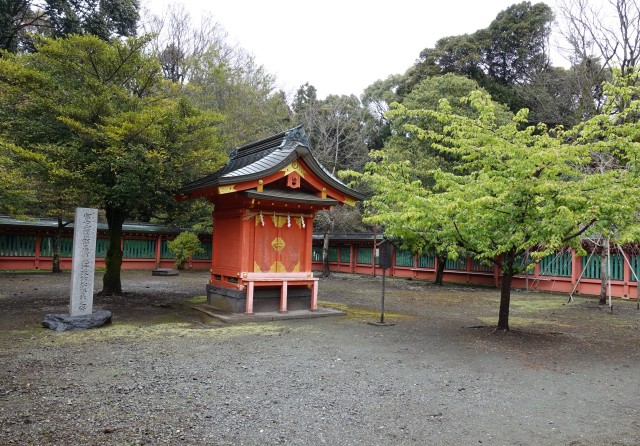
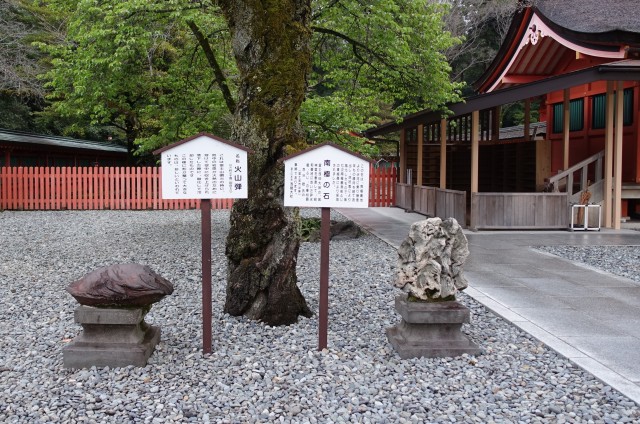
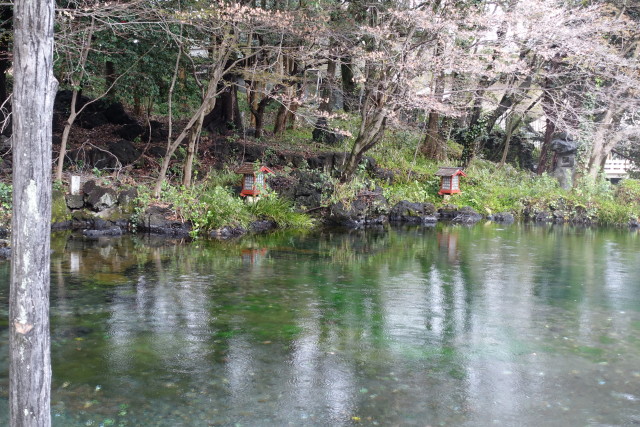
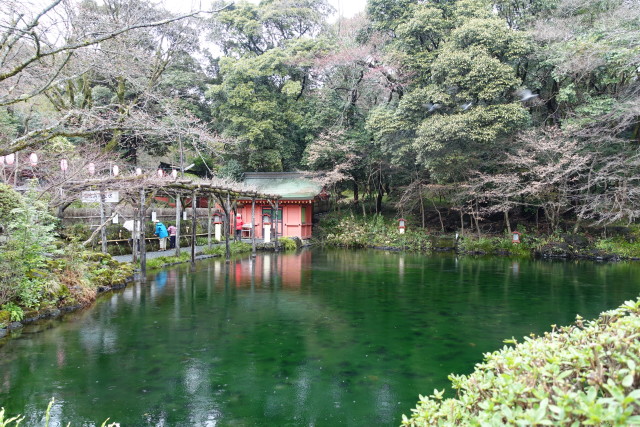
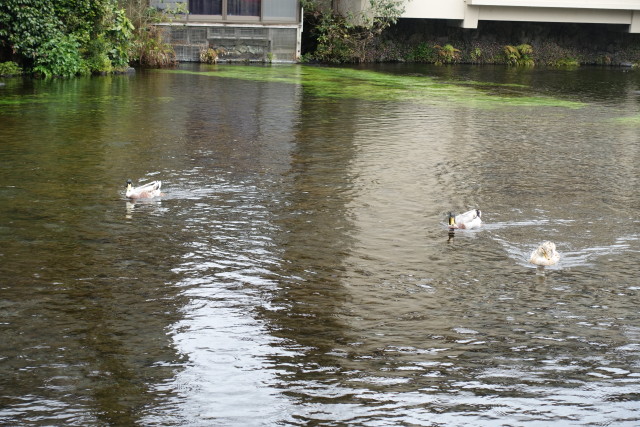
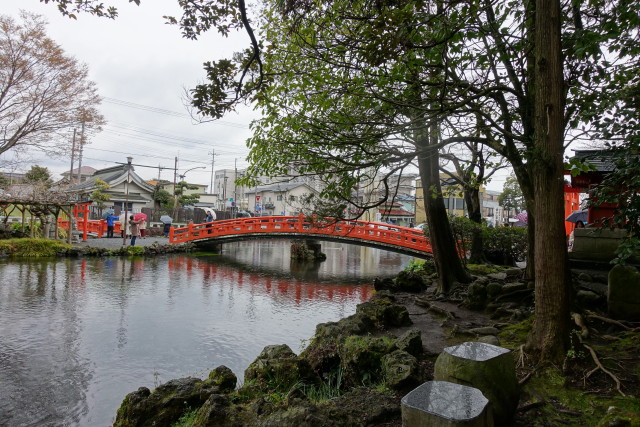
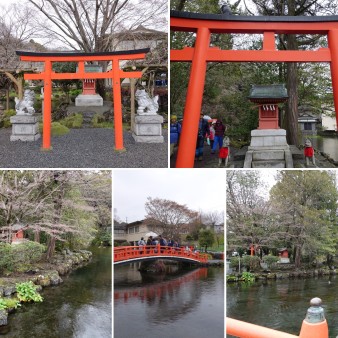

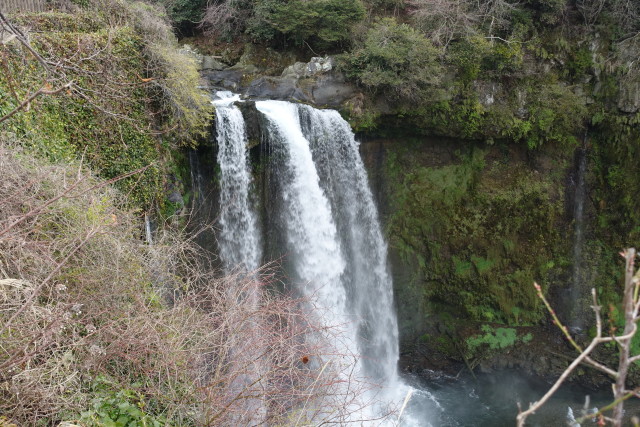
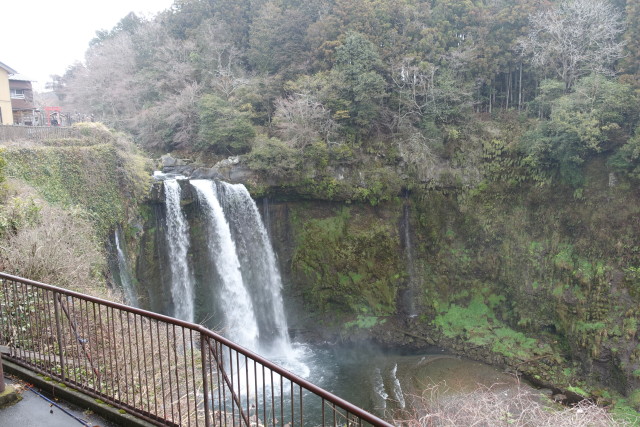
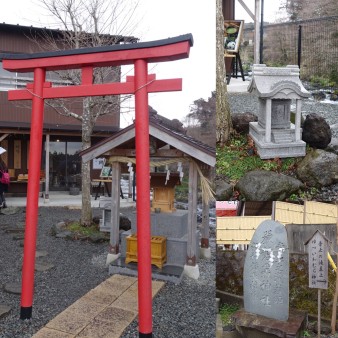
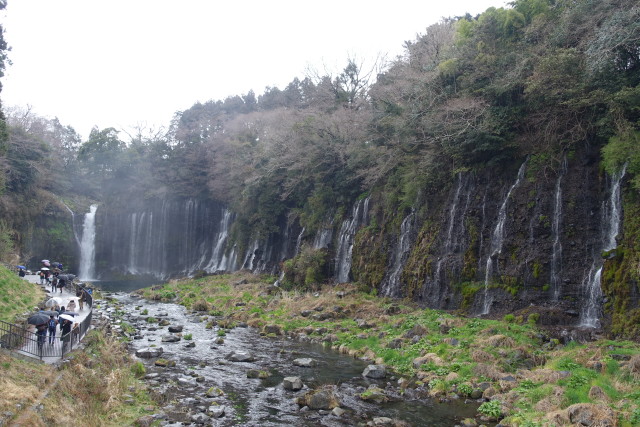
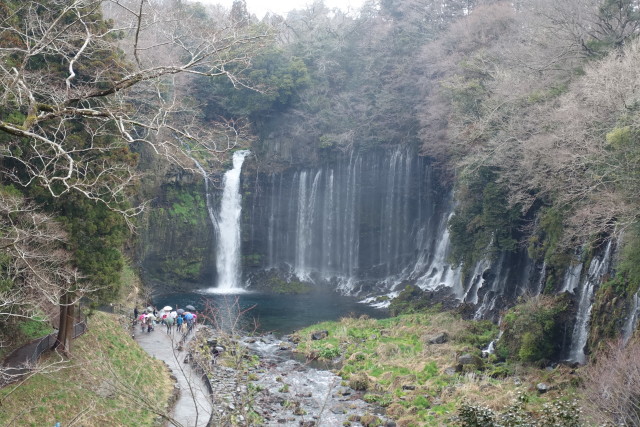

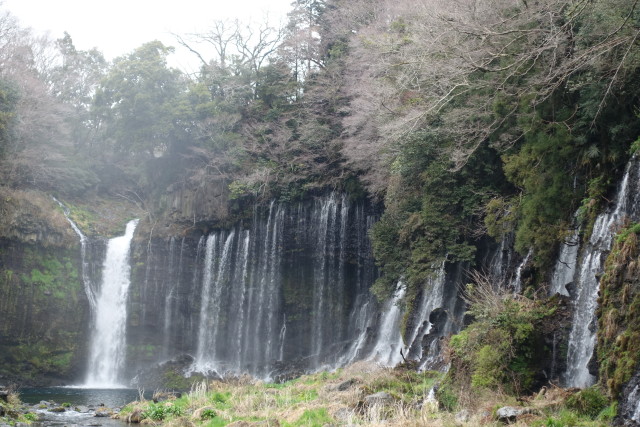
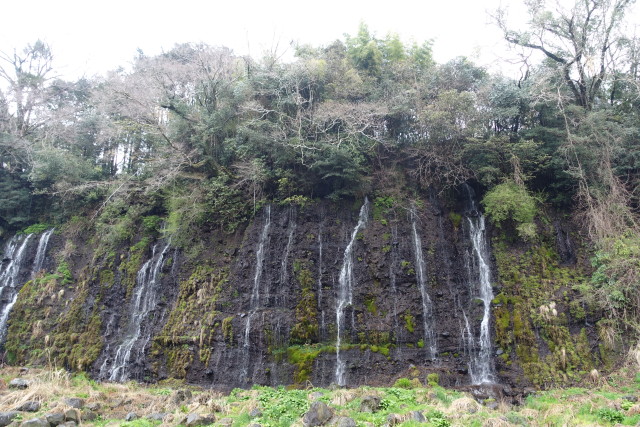
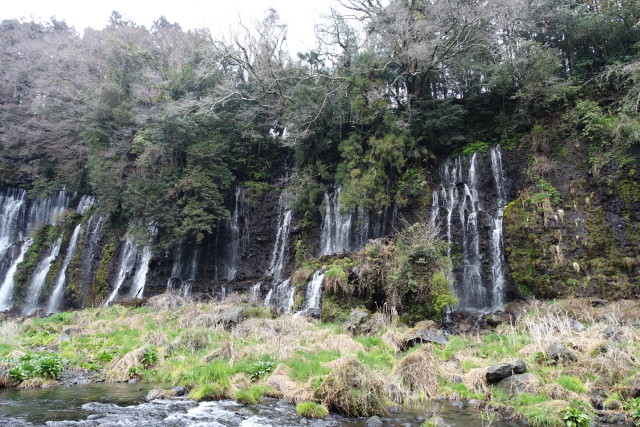
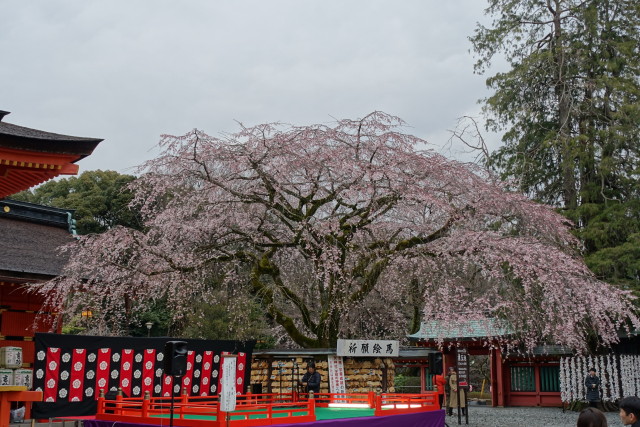
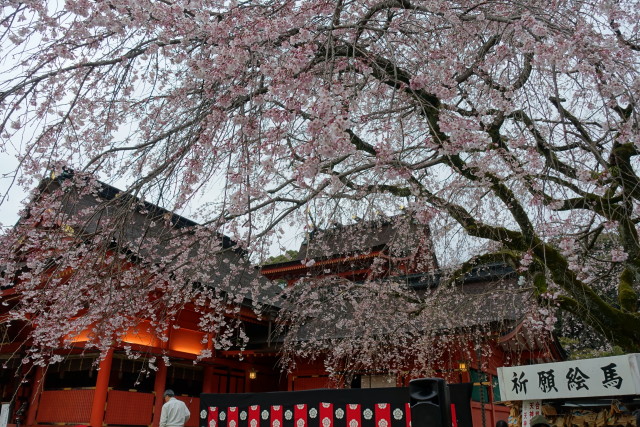
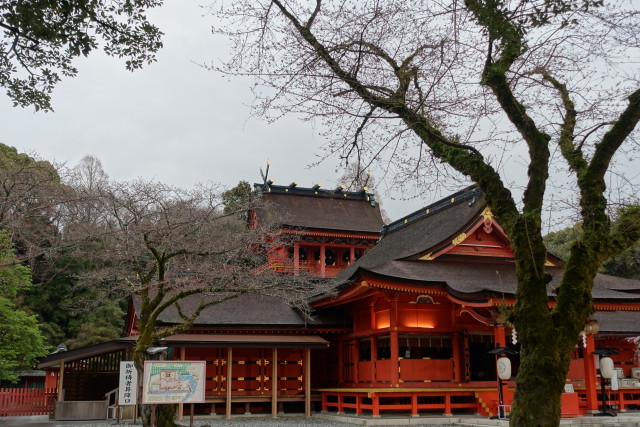
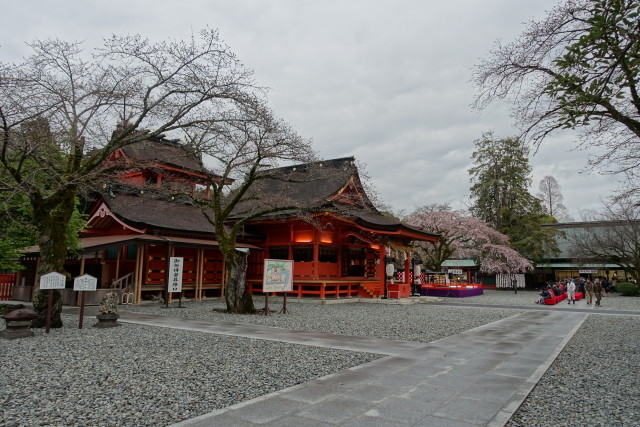
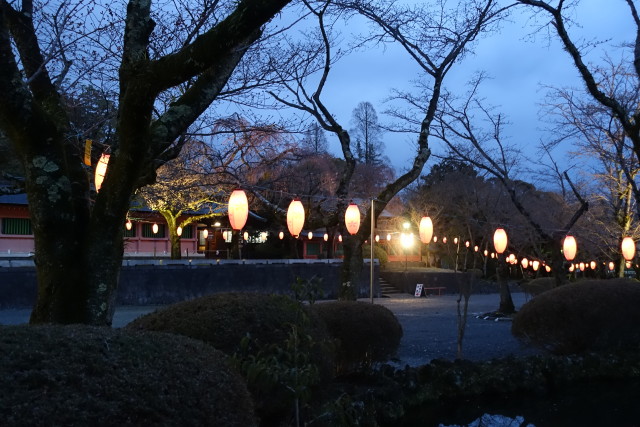
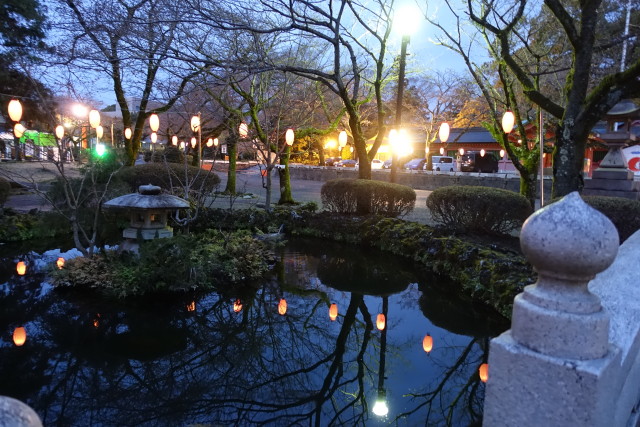
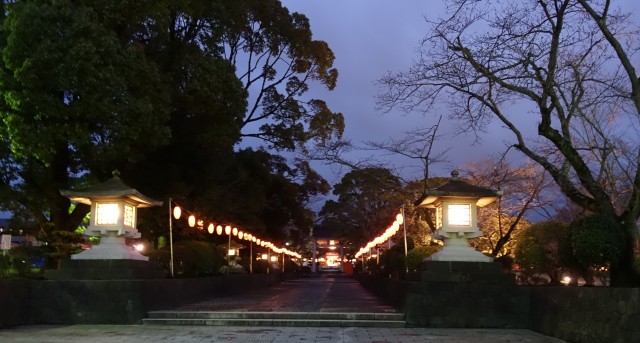
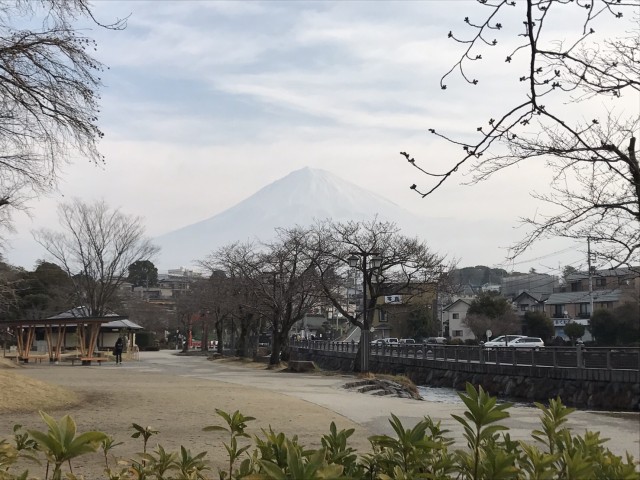
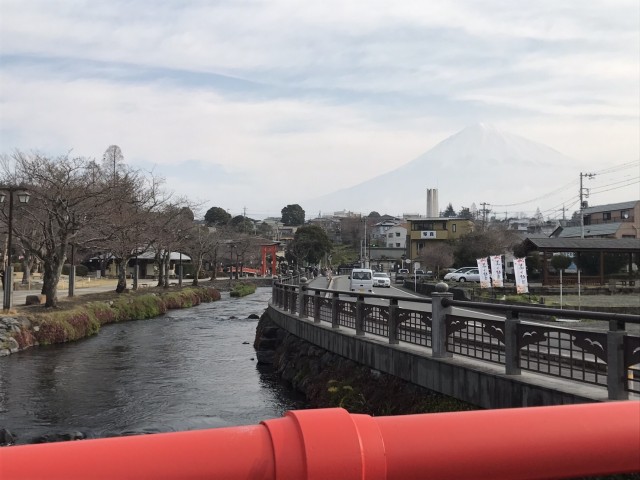
Leave a Reply